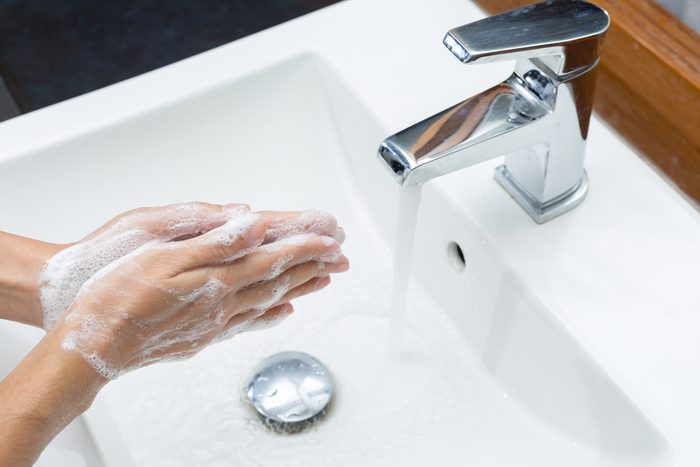
Hand washing works
Washing your hands is essential to good hygiene, stopping germs in their tracks. Washing your hands limits the transfer of bacteria, viruses, and other germs, according to the Mayo Clinic. The Centers for Disease Control and Prevention recommends using soap and clean water or an alcohol-based hand sanitizer to wash your hands, as studies show both are effective ways of keeping germs at bay. Of course, it’s impossible to keep your hands 100 percent germ-free all the time, but it’s absolutely essential after touching the following 10 things. And when cleaning, don’t overlook these 15 everyday items that are dirtier than a toilet seat.
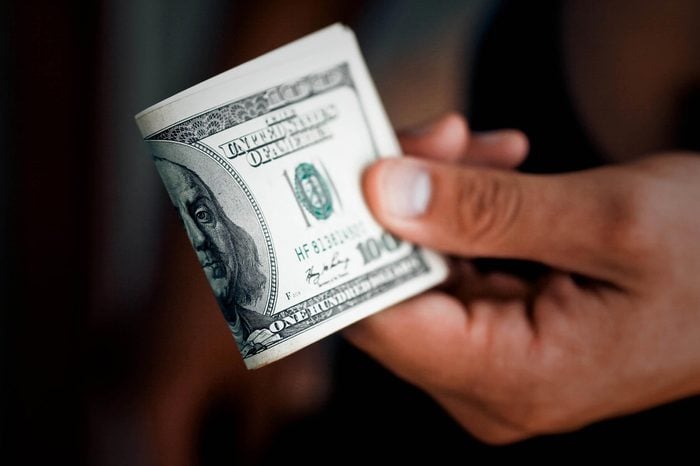
Money
These days you can use a debit or credit card for most purchases, but sometimes you just need to handle cash. When you do, be sure to wash your hands as soon as possible. Researchers tested $1 bills from a New York City bank and found hundreds of microorganisms, including oral and vaginal bacteria, and DNA from pets and viruses. Similar research has shown some cash and coins even contain pathogens like E. coli and salmonella. It doesn’t help that money circulates for a while—$100 bills can circulate for as long as 15 years, according to the Federal Reserve. You’ll never guess how many germs are hiding in your wallet right now. Here are a few fascinating images of everyday objects under a microscope.
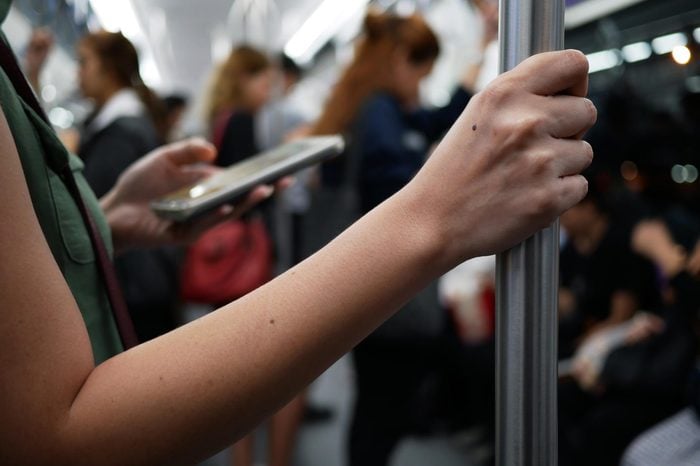
Handrails, handles, or doorknobs
Hand washing is incredibly important to limit the spread of bacteria and viruses, says Katy Burris, MD, a dermatologist at Columbia University Medical Center. One of the critical times to remember to wash is after riding public transportation, where multiple people are continuously touching the same surfaces, Dr. Burris says. This includes everything from handrails on an escalator to poles on the subway to bathroom door handles. Here are 15 diseases you can prevent just by washing your hands.
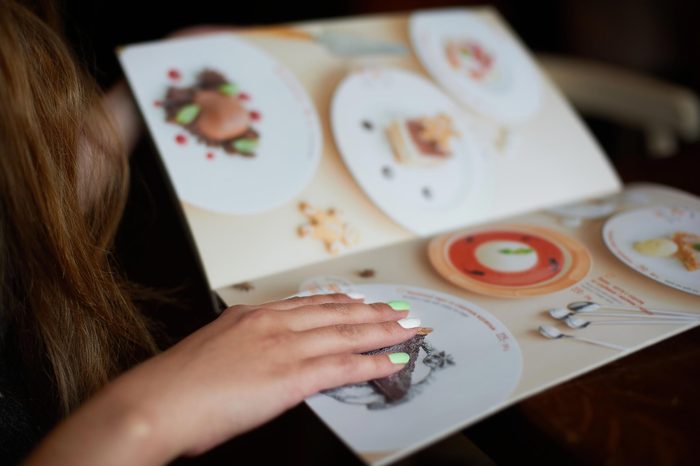
Restaurant menus
Restaurants can be germ-ridden places—but the menu is the worst carrier. Researchers from the University of Arizona found that menus had a whopping 185,000 bacterial organisms. It makes sense, as so many people handle restaurant menus. You can’t avoid touching it, but do wash your hands afterward.
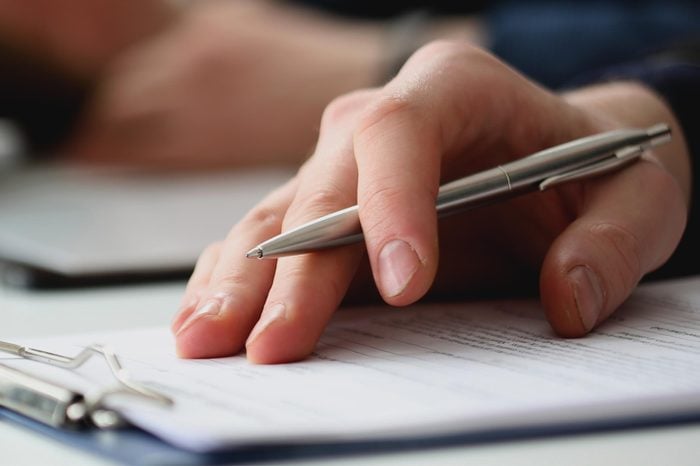
Almost anything in a doctor’s office
Thanks to a parade of patients coming through all day, most things in a doctor’s office harbor germs or bacteria—especially the sign-in pen. In fact, there are 46,000 more germs on that pen than on an average toilet seat. Other gross things to avoid are the waiting room chair armrest and the door handle. Here are 10 things you should be cleaning every day from now on.

Any animals
Not everyone washes their hands after touching pets or animals, but they should, according to Nesochi Okeke-Igbokwe, MD, a physician and health expert. “Animals may carry various diseases,” she says. “And because pets are generally thought of as family friendly, hand washing is sometimes overlooked.” Hand washing after touching animals or interacting with pets, whether yours or someone else’s, is absolutely essential.
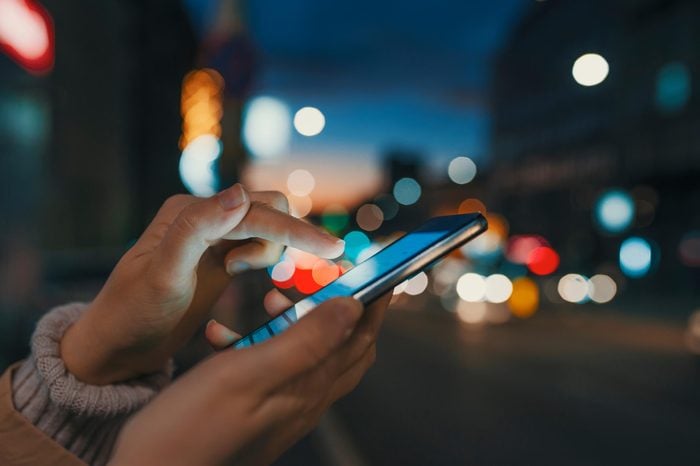
Touchscreens
Now that technology replaces some paper goods, it’s key to wash your hands after touching any screens. One of the worst offenders are kiosk machines in airports or public transportation locations, Dr. Burris says. “Germs are everywhere, and some places may harbor more than you may realize,” she says. Cell phones count, too; especially as we may share them with others. In case you’re wondering, here’s exactly how filthy your phone screen is. The good news: “Simple washing with soap and water will reduce transmission of these pathogens,” Dr. Burris says.
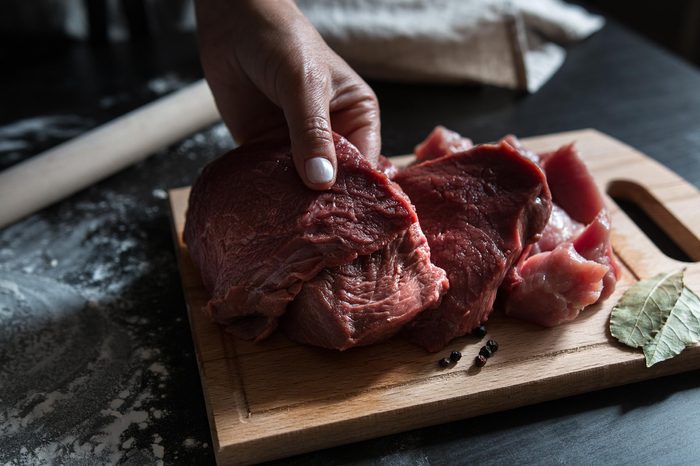
Cutting boards and kitchen sponges
The kitchen is a germ-laden environment. You are not only bringing in raw or uncooked food but also cleaning food, utensils, and textiles, like kitchen towels and sponges. One study found as many as 326 different species of bacteria living on used kitchen sponges. Make sure to toss out the old ones and, as Dr. Burris suggests, always wash your hands before preparing a meal and after handling raw meats. Here’s exactly how to clean your kitchen sponge.
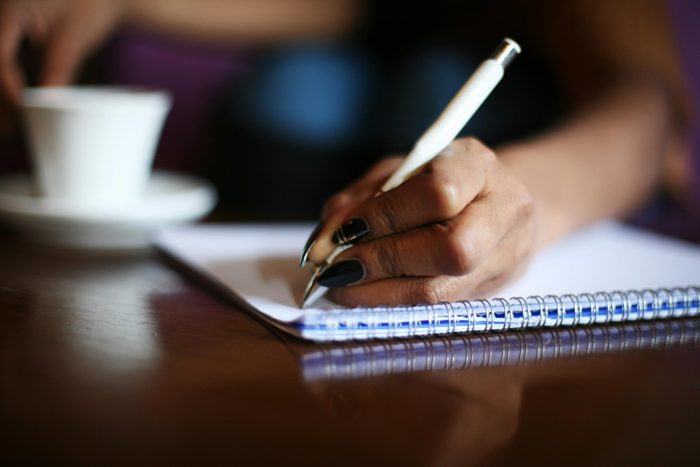
Pens that aren’t yours
Although many people use their phone or computer to take notes and write lists, sometimes you just need to borrow a pen. That’s fine, but wash your hands after using it. The average office pen has ten times the germs of the average office toilet seat, at about 200 bacteria per square inch, according to the Wall Street Journal. If that doesn’t gross you out consider that many people like to chew or gnaw on pen caps. Yuck! Pens are one of these 12 things you’re sharing that germ experts probably wouldn’t.
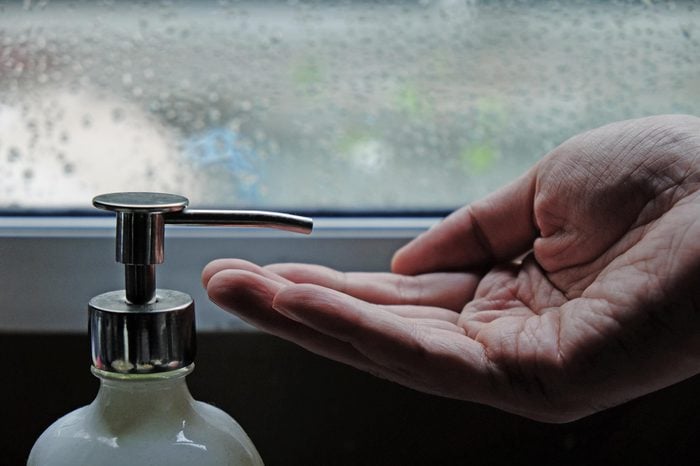
Soap dispensers or pumps
Wait, are we saying you need to wash your soap? Well… sort of; soap dispenser pumps are a haven for bacteria. Researchers from the University of Arizona found refillable soap dispensers especially germ-laden. As you’re pressing the pump, any bacteria you’re hoping to wash off has an equal opportunity to get transferred onto the dispenser. Lead researcher Charles Gerba, PhD, says touching refillable soap containers can actually transfer more bacteria to your hands than if you stuck your hands in a toilet.
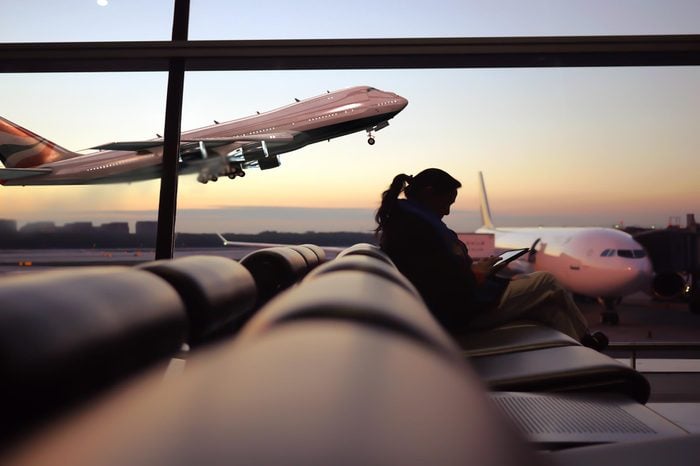
Pretty much anything in an airport
Some 2.6 million airline passengers are traveling every day, according to the Federal Aviation Administration. More people means more germs, and more shared public surfaces where you’ll encounter them. Avoid touching doorknobs, water fountains, kiosk screens, and especially those plastic tubs and trays in the airport security line. People put their dirty shoes and bags in those trays, leading to contamination, according to research published in BMC Infectious Diseases.
Sources:
- Emmanouil Angelakis, Paper money and coins as potential vectors of transmissible disease
- Federal Reserve, How long is the lifespan of U.S. paper money?
- Katy Burris, MD, dermatologist at Columbia University Medical Center
- Nesochi Okeke-Igbokwe, MD, physician and health expert
- Scientific Reports, Microbiome analysis and confocal microscopy of used kitchen sponges
- Wall Street Journal, 8 germ-laden office spots
- University of Arizona, Bacterial hand contamination and transfer after use of contaminated bulk-soap-refillable dispensers
- BMC Infectious Disease, Deposition of respiratory virus pathogens on frequently touched surfaces at airports
